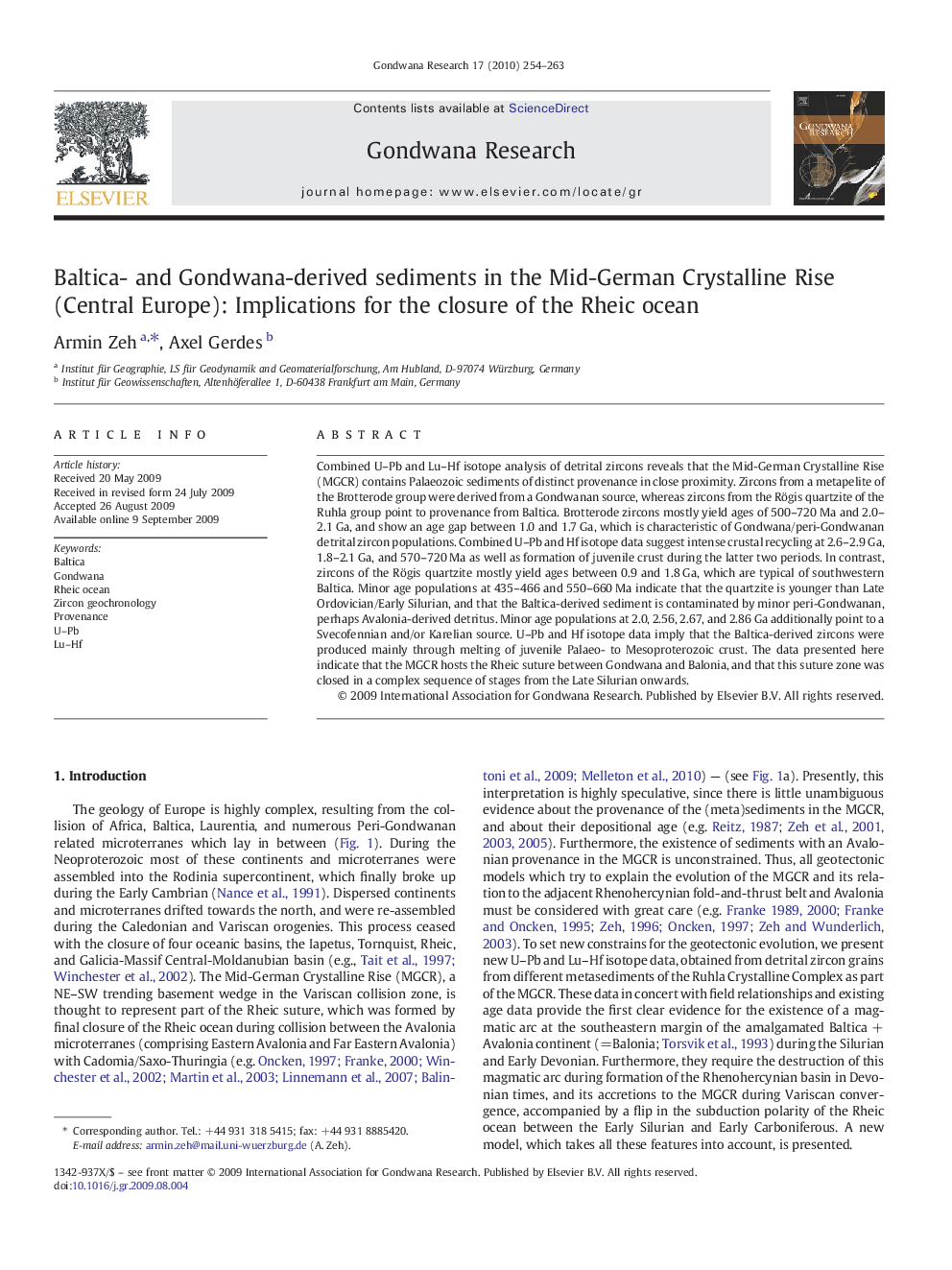| Article ID | Journal | Published Year | Pages | File Type |
|---|---|---|---|---|
| 4727229 | Gondwana Research | 2010 | 10 Pages |
Combined U–Pb and Lu–Hf isotope analysis of detrital zircons reveals that the Mid-German Crystalline Rise (MGCR) contains Palaeozoic sediments of distinct provenance in close proximity. Zircons from a metapelite of the Brotterode group were derived from a Gondwanan source, whereas zircons from the Rögis quartzite of the Ruhla group point to provenance from Baltica. Brotterode zircons mostly yield ages of 500–720 Ma and 2.0–2.1 Ga, and show an age gap between 1.0 and 1.7 Ga, which is characteristic of Gondwana/peri-Gondwanan detrital zircon populations. Combined U–Pb and Hf isotope data suggest intense crustal recycling at 2.6–2.9 Ga, 1.8–2.1 Ga, and 570–720 Ma as well as formation of juvenile crust during the latter two periods. In contrast, zircons of the Rögis quartzite mostly yield ages between 0.9 and 1.8 Ga, which are typical of southwestern Baltica. Minor age populations at 435–466 and 550–660 Ma indicate that the quartzite is younger than Late Ordovician/Early Silurian, and that the Baltica-derived sediment is contaminated by minor peri-Gondwanan, perhaps Avalonia-derived detritus. Minor age populations at 2.0, 2.56, 2.67, and 2.86 Ga additionally point to a Svecofennian and/or Karelian source. U–Pb and Hf isotope data imply that the Baltica-derived zircons were produced mainly through melting of juvenile Palaeo- to Mesoproterozoic crust. The data presented here indicate that the MGCR hosts the Rheic suture between Gondwana and Balonia, and that this suture zone was closed in a complex sequence of stages from the Late Silurian onwards.
